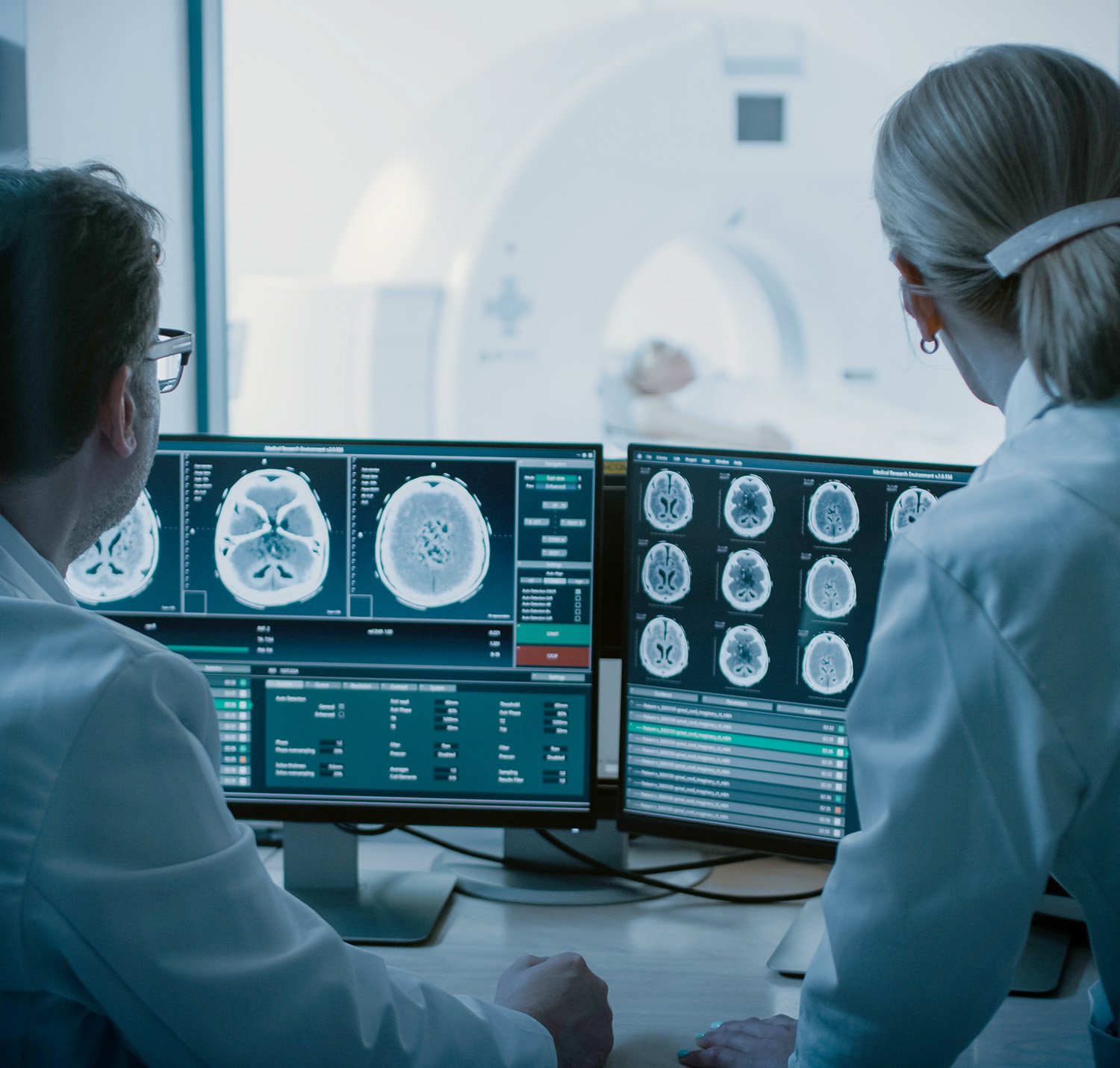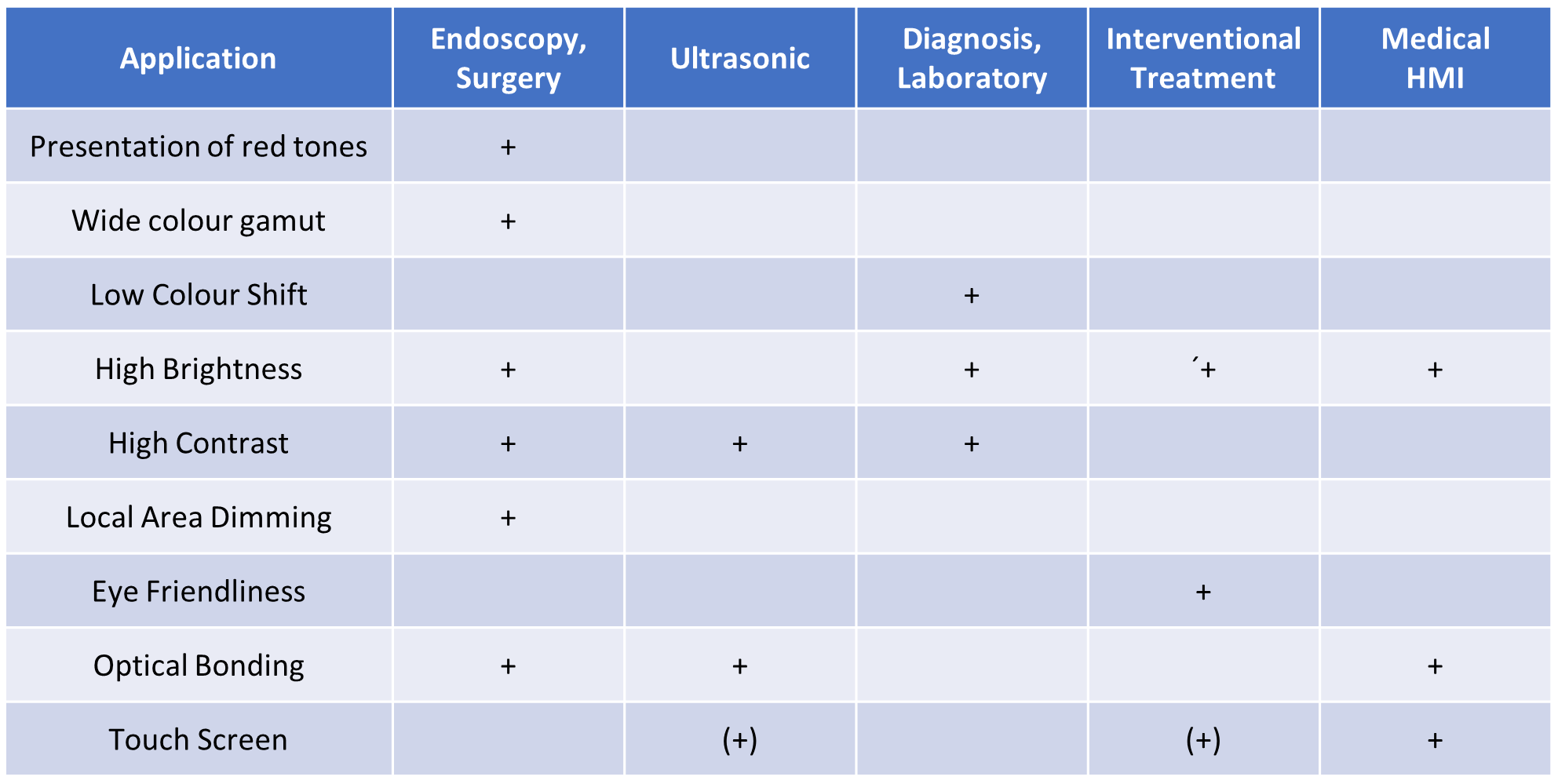


Displays for Medical Applications








Monitors that are qualified for medical use are used in the operating room, in reporting and in diagnosis.
Key components for this are TFT displays. They must have special properties regarding optics. The monitor
electronics take care of the electrical adaptation to the system. It also supports the scaling of the
image, if necessary, the control of the backlight and linearisation according to DICOM. In the following,
the properties of a display are specifically considered regarding its suitability for use in a medical
environment.
Table 1 shows the different requirements that are placed on a display that is to be used in a medical
environment.
In the data sheet of the display, all optical parameters are summarised in a table (see table 2).
To be able to reproduce and compare measured values, the same conditions must be assumed for
the measurements.
The manufacturer states in detail in the specification which set-ups, measuring
devices and procedures were used to determine the values. Before measurements, the test specimen
must have reached operating temperature; the measurements are carried out at room temperature
in a dark environment.
The specification of LG Display‘s LM270WQ3 from was used for the discussion of the parameters.


Monitors that are qualified for medical use are used in the operating room, in reporting and in diagnosis.
Key components for this are TFT displays. They must have special properties regarding optics. The monitor
electronics take care of the electrical adaptation to the system. It also supports the scaling of the
image, if necessary, the control of the backlight and linearisation according to DICOM. In the following,
the properties of a display are specifically considered regarding its suitability for use in a medical
environment.
Table 1 shows the different requirements that are placed on a display that is to be used in a medical
environment.
In the data sheet of the display, all optical parameters are summarised in a table (see table 2).
To be able to reproduce and compare measured values, the same conditions must be assumed for
the measurements.
The manufacturer states in detail in the specification which set-ups, measuring
devices and procedures were used to determine the values. Before measurements, the test specimen
must have reached operating temperature; the measurements are carried out at room temperature
in a dark environment.
The specification of LG Display‘s LM270WQ3 from was used for the discussion of the parameters.
